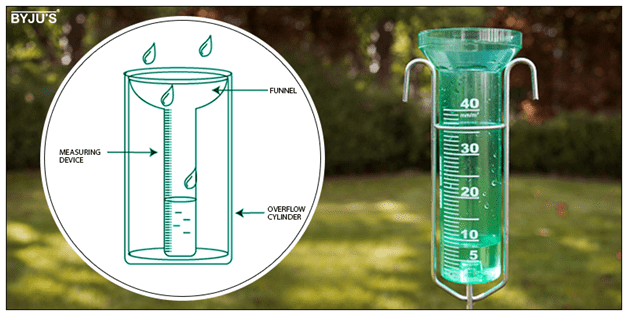Compare the Leading Rain Gauge Models for Accurate and Regular Readings
Compare the Leading Rain Gauge Models for Accurate and Regular Readings
Blog Article
Unveiling the Scientific Research Behind Rainfall Assesses: Just How These Tools Play a Crucial Function in Environment Research and Environmental Surveillance
Rain assesses, seemingly easy tools, hold an extensive relevance in the world of climate research study and environmental monitoring. These plain tools silently accumulate among nature's most necessary aspects-- rainfall. Behind their plain exterior exists a complex scientific research that is indispensable for recognizing the characteristics of our environment. As we peel back the layers of this scientific shroud surrounding rainfall gauges, we uncover a world where accuracy, data accuracy, and meticulous observation converge to unveil a much deeper understanding of our transforming environment and its effect on the earth.
Importance of Rain Gauges
Rainfall assesses play an important role in monitoring and determining precipitation levels, giving vital data for environment research study and analysis. These tools are essential in measuring the amount of rains that happens in a specific location over a particular duration. By accumulating and determining rainwater, rainfall assesses offer beneficial insights right into the circulation and intensity of rainfall, aiding meteorologists, hydrologists, and climatologists in understanding weather patterns and trends.
Additionally, lasting information collected from rain determines helps in analyzing environment adjustment influences and patterns, adding considerably to clinical study and decision-making procedures. In significance, rainfall gauges serve as important devices in the area of weather forecasting and ecological scientific research, playing a crucial duty in progressing our understanding of climate and environment characteristics.
Kinds Of Rainfall Gauges

Capability and Procedure
In the world of climate research and atmospheric research studies, the effectiveness of rainfall assesses lies in their elaborate capability and exact operational devices. Rain determines are created to accurately measure the quantity of precipitation that drops over a certain area during a collection period.
The performance of rainfall assesses is based upon the principle of accumulating and determining rainwater in a standard manner. This gathered data is essential for recognizing neighborhood weather patterns, tracking long-term environment trends, and analyzing environmental effects. To make sure precise measurements, rain determines need to be strategically positioned in open locations away from blockages such as buildings or trees that can disrupt the collection process.
The operational element of rain evaluates includes normal upkeep to avoid particles build-up, calibration checks to maintain dimension accuracy, and data recording for evaluation (rain gauge). Overall, the performance and procedure of rain evaluates are necessary for gathering trusted rainfall information essential to climate research and environmental monitoring
Role in Environment Research Study
Given the vital value of accurate rainfall dimensions in recognizing climate patterns and ecological influences, the function of rainfall evaluates in environment study is indispensable. Rainfall evaluates supply important data for environment research by measuring the amount of rainfall that tips over a particular area throughout an offered period. This information is crucial for keeping track of lasting patterns in precipitation patterns, assessing the influence of environment adjustment on rainfall circulation, and boosting environment models.

Environment researchers make use of data collected from rainfall evaluates to examine variations in precipitation levels, recognize local climate trends, and examine the effectiveness of water source administration approaches. By contrasting historical precipitation information with current measurements, scientists can identify shifts in rainfall patterns, such as adjustments in the frequency or strength of rains occasions. This details is crucial for understanding how climate modification is affecting rainfall dynamics and can assist policymakers make educated choices regarding adjustment and reduction strategies.
Applications in Environmental Surveillance

In flood forecasting, rainfall scale data assists to track rains intensity and distribution, allowing authorities to release prompt cautions and find more take required measures to reduce flooding risks (rain gauge). Drought surveillance counts on rainfall gauge information to examine dampness degrees in the soil and track precipitation deficiencies, assisting in the identification of drought-prone areas and the application of drought action methods
Furthermore, rainfall scale data plays a crucial duty in water resource monitoring by supplying information on water accessibility and usage fads. This data is used to make over at this website informed decisions relating to water allocation, conservation actions, and sustainable water resource planning. Additionally, in farming, rainfall gauge information assists farmers in enhancing irrigation timetables, crop selection, and general farm monitoring methods based upon local precipitation patterns. Overall, like it rainfall gauges are essential tools in ecological surveillance, providing useful insights that add to informed decision-making and lasting source monitoring.
Conclusion
Finally, rainfall determines are crucial tools for measuring precipitation, offering beneficial information for environment research study and environmental tracking. With different kinds and functionalities, rain evaluates play an important function in comprehending rainfall patterns and their influence on the environment. By precisely measuring rains, these tools add to the innovation of scientific knowledge and assistance in making informed choices relevant to water source administration and calamity readiness.
Rainfall determines play an essential role in surveillance and measuring rainfall levels, providing necessary information for environment research study and evaluation. The basic rain gauge, recognized as the "tipping container" gauge, is one of the most commonly utilized tools. Ultrasonic rain evaluates usage noise waves to find the visibility of rainfall, offering real-time information on rainfall levels.Environment scientists use information gathered from rain assesses to evaluate variations in rainfall degrees, identify local climate patterns, and evaluate the performance of water resource monitoring methods.In conclusion, rainfall gauges are essential tools for measuring precipitation, giving beneficial data for climate study and environmental monitoring.
Report this page